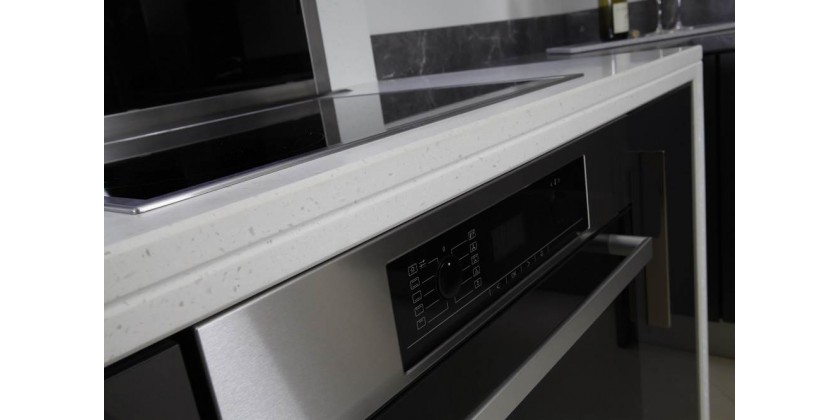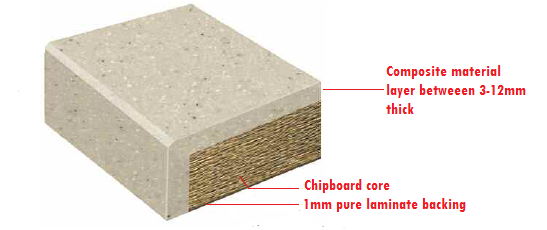
What is a composite material?
“Composite material” is a very loose term used and is often called composition material or composites for short. This is where two or more very different materials either in physical or chemical properties are put together or combined to form a new composition. They are in a sense independent to each other, but when a new composition is formed they often complement each other and perform better or react differently as a pair than as a separate entity. This is often done to make a composition material that is lighter, stronger or cheaper than conventional materials available.
There are many examples of composite materials such as building, metal and ceramic composites, but the one we are going to be looking at is acrylic mineral composites. This is exactly what the composite consists of that makes up the composite worktops you see available in stores and showrooms today. It is a combination of polymer resin, different minerals, bonding agents and colour pigments. This sounds pretty insignificant on their own but when combined they create a surface like no other, one that is warm to the touch, non-porous and therefore 100% hygienic, scratch, impact and heat resistant (up to 240°C), the two benefits that normally make it attractive as a kitchen work surface is the fact that you can achieve seamless joints and that it is a renewable and repairable surface.
What is composite worktop?
Composite worktop construction and material

Well once the different components of the composite material are bonded together it is then rolled out in flat sheets, depending on the manufacturer it can be between 3mm and 12mm thick. This sheet is then bonded to a chipboard or MDF (Medium density fibre board) as its base or main structure if you like. Good manufacturers of composite worktops normally add a pure 1mm laminate layer at the bottom for added stability and moisture protection for the chipboard. For supply only worktops or modular worktops the edges are added in the factory and exposed edges can easily be edged with no visible joins onsite, but for template and fitting products edges are generally added at the fabrication stage which makes the fabrication process a lot quicker.
What are the benefits/attributes of composite worktops?
- Warm and velvety to the touch and available as a matt finish (only finish available)
- Scratch, stain, fading, heat and impact resistant
- Easy installation as a DIY project or any fitter that has fitted a laminate worktop can install these as no specialist tools are required only standard woodworking tools
- Seamless joints can be achieved onsite giving your kitchen that modern, sleek, uninterrupted lines
- Reparable or renewable surface, if scratches or damage does occur a simple sanding will return the top to its original condition
- Non-porous surface and 100% hygienic (no mould or bacteria can grow on the surface)
- Overall thickness (composite layer plus chipboard) can range from 38mm – 54mm in thickness
- Most manufacturers have great warranties, good ones offer 10 years best offer 25 years plus
View All Our Composite Worktops Available
Ok so what is a Solid Surface worktop then?
Solid surface worktops is a term used by some manufacturers to describe their Composite worktops (Composite layer on a mdf sub-frame) however we believe that if you using the word “solid surface” the product should be what the name implies, SOLID!
Our Solid Surface Worktops that are available are exactly that, with no chipboard sub-frame and the composite material runs through the materials thickness. And all are from the most trusted manufacturers in the UK.
What are the Pros and Cons with solid surface worktops?
- The worktops are generally more costly than standard composite worktops, but this should be understandable as there is no cheap chipboard filling in the worktops thickness, only solid acrylic material.
- Solid surface worktops are generally 25-30mm in overall thickness, so unfortunately that chunky worktop look will take more to achieve.
- Has all the same great attributes as standard composite worktops as mentioned above, with much more design freedom.
- Because no chipboard sub-frame is present there is no need to worry about water damage, which is important in kitchens and bathrooms alike.
- Most suitable for under-mounted sinks in the kitchen.
- No specialist tools are required for fitting and curved worktops are much easier to create as no edging strips have to be reapplied.







Leave a Reply Cancel Reply
All fields are required